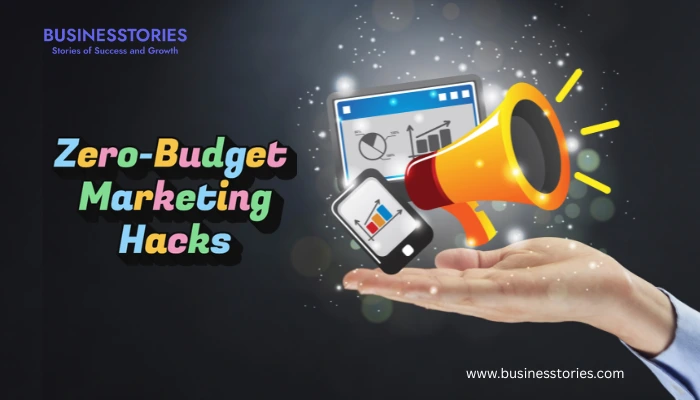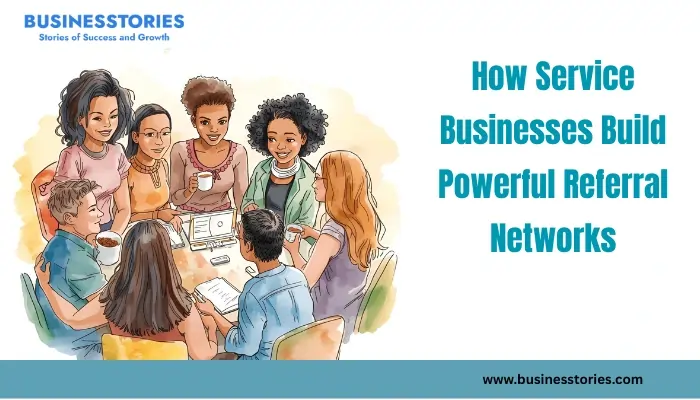Why zero-budget works (and why it’s smarter than “cheap” marketing)
Many local entrepreneurs confuse “no budget” with “no effort.” The truth: zero-budget marketing succeeds when you use time, relationships, and creativity instead of money, which further helps build the business. For local businesses, get the same results or better than paid ads because people buy from people they trust — and trust is built locally through community marketing and word-of-mouth.
Below is a tactical, step-by-step plan you can implement over 8 weeks. Each step is practical, repeatable and requires little more than your time and consistency.
Also Read: What is the Most Powerful Social Media Marketing Strategy?
Quick results timeline (8 weeks)
- Week 1: Foundations — Focuses on building foundations through profiles, listings, simple assets.
- Week 2–3: Local visibility — SEO work and partnerships.
- Week 4–5: Conversion systems — events, offers, funnels
- Week 6–8: Retention & scale — referral engines and content loops
Use these weekly milestones serve as important checkpoints and measure small wins: calls, visits, signups, repeat customers.
Step 1 — Fix the basics (Day 1–7): presence & credibility
Why it matters: Customers must be able to find you and trust you quickly.
Do this:
- Claim and optimize your Google Business Profile. Use a clear description with primary keywords like local businesses or zero-budget marketing and list accurate hours, photos, and services.
- Create (or polish) a single-page website or landing page using free tools like (Carrd / Google Sites / WordPress). Include: address, map, one simple sentence about your main benefit, 3 social proof items (reviews or customer photos), and a clear CTA (call or WhatsApp).
- Add consistent NAP (Business Name, Address, Phone Number) details across any directory you use — Justdial, Sulekha, Bing Places and Facebook. This is basic local SEO to improve search ranking.
Tip: Upload 8–12 real photos — staff, product close-ups, and the storefront. Visuals convert customers.
Step 2 — Activate social media the smart way (Week 1–2)
Why it matters: Social channels works as free distribution engines if you use formats that users actually like.
Do this:
- Pick 1–2 platforms where your customers are spending time, usually Instagram and Facebook, or WhatsApp and Instagram for local retail. Do not spread yourself further, as it weakens the effort itself.
- Post a daily micro-content loop:
- 3 posts + 3 stories per week.
- Types: behind-the-scenes, customer spotlight, quick how-to, and a limited-time offer.
- Use local hashtags (#[YourCity]Eats, #[YourNeighborhood]) and tag neighbourhood landmarks.
- Use Reels/Shorts: 15–30 sec clips showing a product in use, a quick tip, or a customer reaction. These posts get free reach.
- Add direct chat channels, WhatsApp Business with saved replies and a greeting message offering a simple incentive (10% off next visit) helps in getting more customers to join.
Step 3 — Build community relationships (Week 2–4): the multiplier
Why it matters: Local partnerships and neighbourhood trust give you organic reach that no ad can match.
Do this:
- Identify 10 local businesses that have the same type of customers who would visit each other’s places, like a salon and a coffee shop, or a bookstore and a co-working space. Propose mutual shout outs, leaflet exchange, or combined package deals.
- Organize one free small event like pop-up, demo or workshop in partnership with one neighbour. Use their footfall to showcase your product. Collect emails/WhatsApp numbers for further contact.
- Join local online groups like Facebook neighbourhood groups, Nextdoor, local Telegram/WhatsApp groups. Contribute useful posts (tips, local insights) avoid hard selling When businesses provide regular help to customers, they surely create positive word-of-mouth marketing.
Metric: track number of new contacts gained per partner and number of attendees per event.
Step 4 — Turn customers into a referral engine (Week 4–6)
Why it matters: Referrals convert at much higher rates and cost zero.
Do this:
- Create a simple “Bring a Friend” system: both referrer and referee get a small gift (free coffee, accessory). Use physical referral cards and a digital form via QR code.
- Ask at the right time: train staff to ask for referrals at the right time when customers are most satisfied moments — e.g., “Love this? Bring a friend next time and both of you get the same services or benefits”
- Showcase referral stories on social media platforms by posting a photo of the friend pair along with a short quote. This approach helps build trust and encourages more customers to participate in referral programs. Social proof fuels more referrals.
Measure: Need to measure how many referral conversions happen each week and find the average value from each referred customer.
Step 5 — Local content that ranks (Week 3–7): small SEO wins
Why it matters: Organic search for “near me” queries drive qualified footfall to business locations.
Do this:
- Write 2–4 short local blog posts (500–700 words) answering common local queries:
- “Best [service] near [neighbourhood]”,
- “How to choose [product] in [city]”.
- Mention landmarks and neighbourhood terms.
- Create FAQ sections on your site and Google Business Profile using the words people search for online. This practice will help your content match what users are actually looking for.
- Add schema mark-up, if possible for local business and events by using free tools (there are free plugins and generators). This will help search engines understand your content better.
Quick win: Post one event (even a small weekend demo) on Google Business — this appears in search results.
Step 6 — Leverage user-generated content (Week 5–8)
Why it matters: UGC is authentic, free, and shareable.
Do this:
- Run a “Tag and Win” monthly micro-contest: ask customers to post photos tagging your handle for a chance to win a small prize, which further increases brand visibility, and the contest itself generates user engagement. Feature winners in your stories. This will definitely make your content more engaging.
- Create a simple in-store photo corner (a branded backdrop) and encourage customers to take pictures. Offer an instant discount for posting and tagging, which encourages customer participation.
- Convert testimonials into short video clips — 15–20 sec — and publish these customer feedbacks on social media platforms.
Step 7 — Email / WhatsApp nurture (Ongoing from Week 2)
Why it matters: Repeat customers actually cost much less to keep than finding new ones. They definitely give better profits to businesses.
Do this:
- Collect customers contacts in exchange for a simple lead magnet — a “local guide” coupon or first-time discount. Which can further help build your customer database.
- Send a weekly 2-line update with new arrivals, a quick tip, and a single CTA. Keep it conversational, don’t try to sell them the same way a salesman would.
- Use WhatsApp broadcast lists for immediate reach to target audience— limit to 2 messages per week to avoid subscriber churn effectively.
KPIs: include open rate, where the WhatsApp read % show good results, and repeat purchase rate.
Bonus hacks (always zero budget if done right)
- Cross-promote with micro-influencers who trade your product for promoting the brand instead of money. (micro barter).
- Leverage offline micro-events: free sampling at a farmer’s market or a community meetup. The same approach works for direct customer connection.
- Convert repeat customers into micro-ambassadors with “insider” perks when we give them special benefits and early access to new things.
Measurement: simple metrics to track weekly
- Footfall from each channel (social, Google, partners): You can actually track simple numbers every week. This definitely helps measure your progress clearly.
- New contacts collected through email and WhatsApp.
- Referral conversions and repeat rate: Referral conversions actually show how many referred customers definitely make purchases and come back again.
- Engagement on social posts like post likes, comments, saves, shares.
- Revenue per campaign, even from small promotions.
- New contacts actually collected through email and WhatsApp channels are definitely tracked for business growth
Also Read: How to Think Outside the Box with Your Marketing Ideas
Final checklist (printable)
- Google Business profile claimed & photos uploaded
- One-page website or landing page live
- Social handle and 1 week of content scheduled
- 3 local partnerships initiated
- Referral program templates with cards and QR printed
- 1 micro-event planned and posted on Google
- WhatsApp broadcast list created
Closing note: consistency beats budget
Consistency actually matters more than having a big budget. You can definitely achieve better results by being regular rather than spending lots of money.
Zero-budget marketing is not a hack you run once — it is a skill you must develop regularly. The secret is consistency in showing up in local searches, being helpful in your community, and making it effortless for customers to spread the word. If you commit 3–5 hours a week to this plan for 8 weeks, you’ll see measurable increases in visits, leads and loyal customers, which will further improve your business results.



